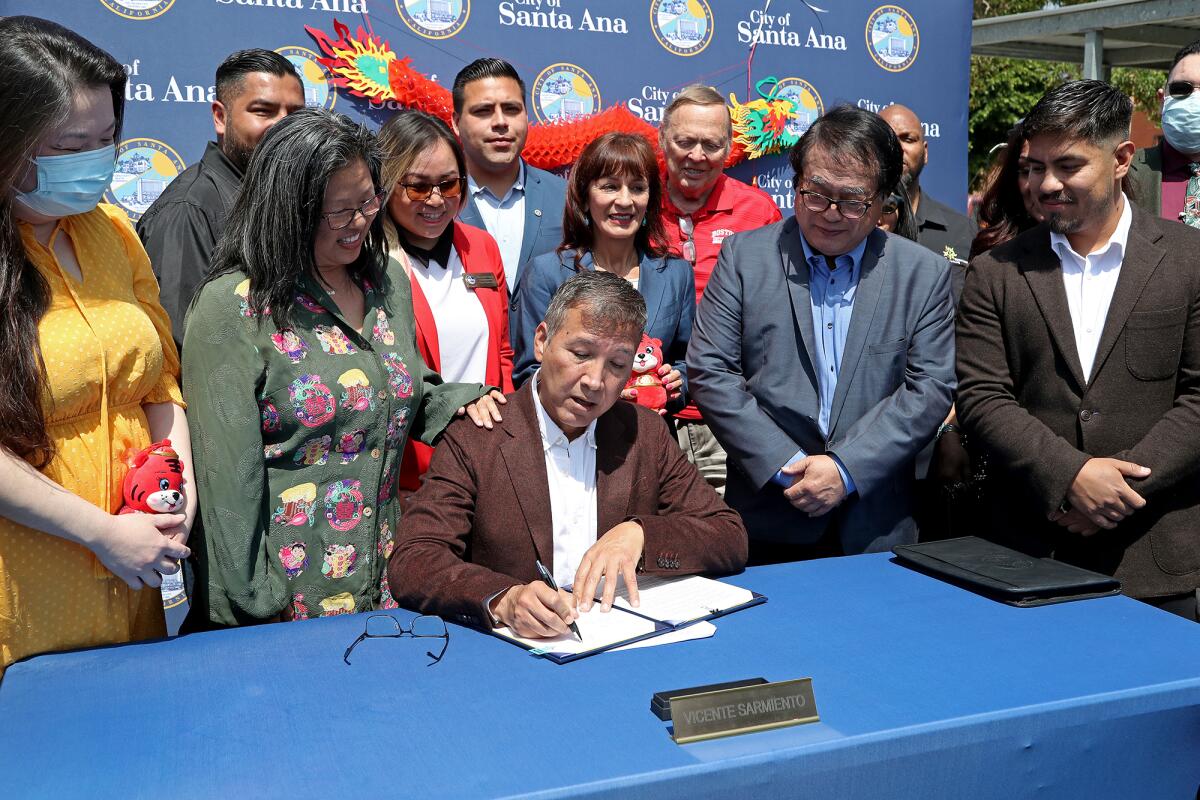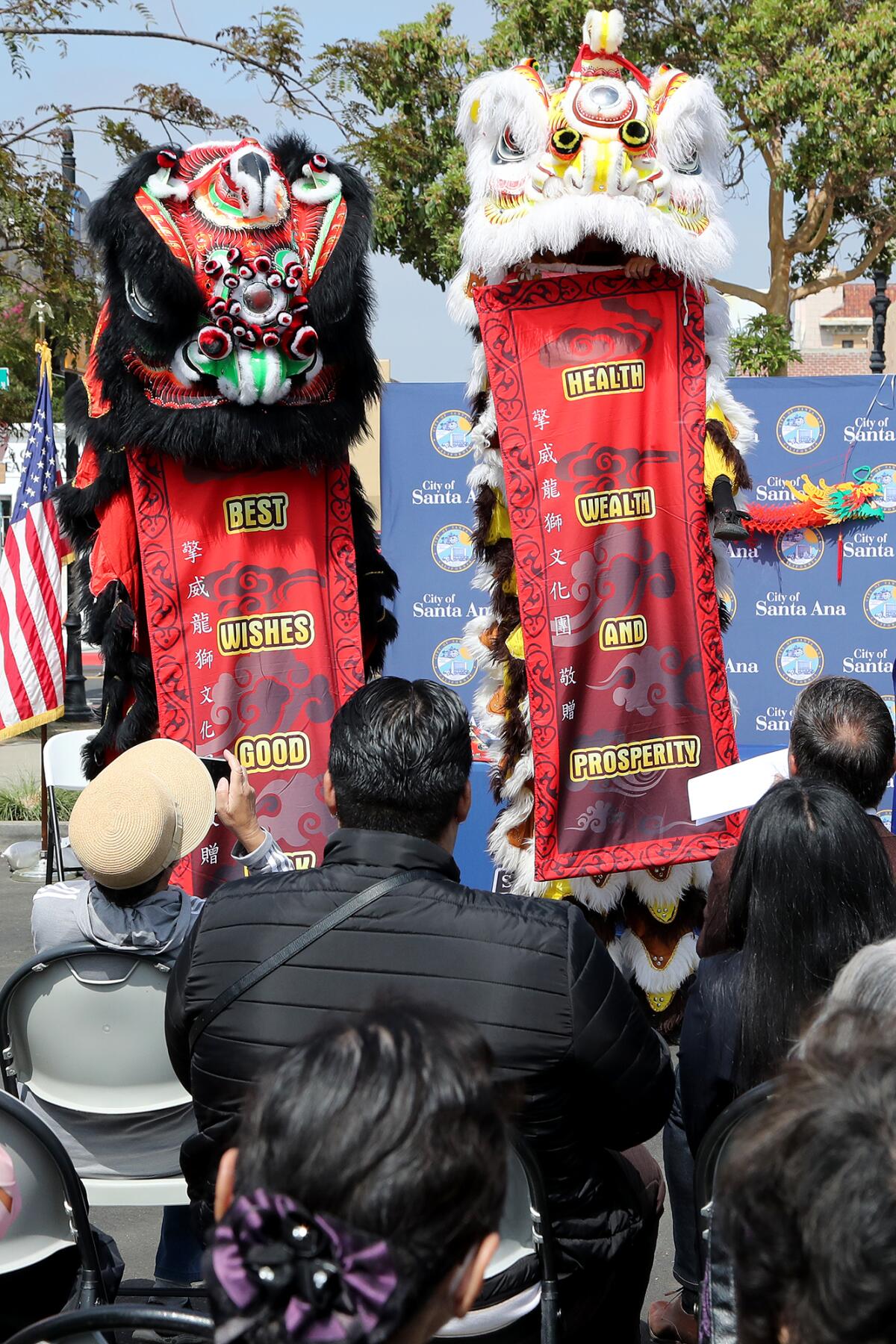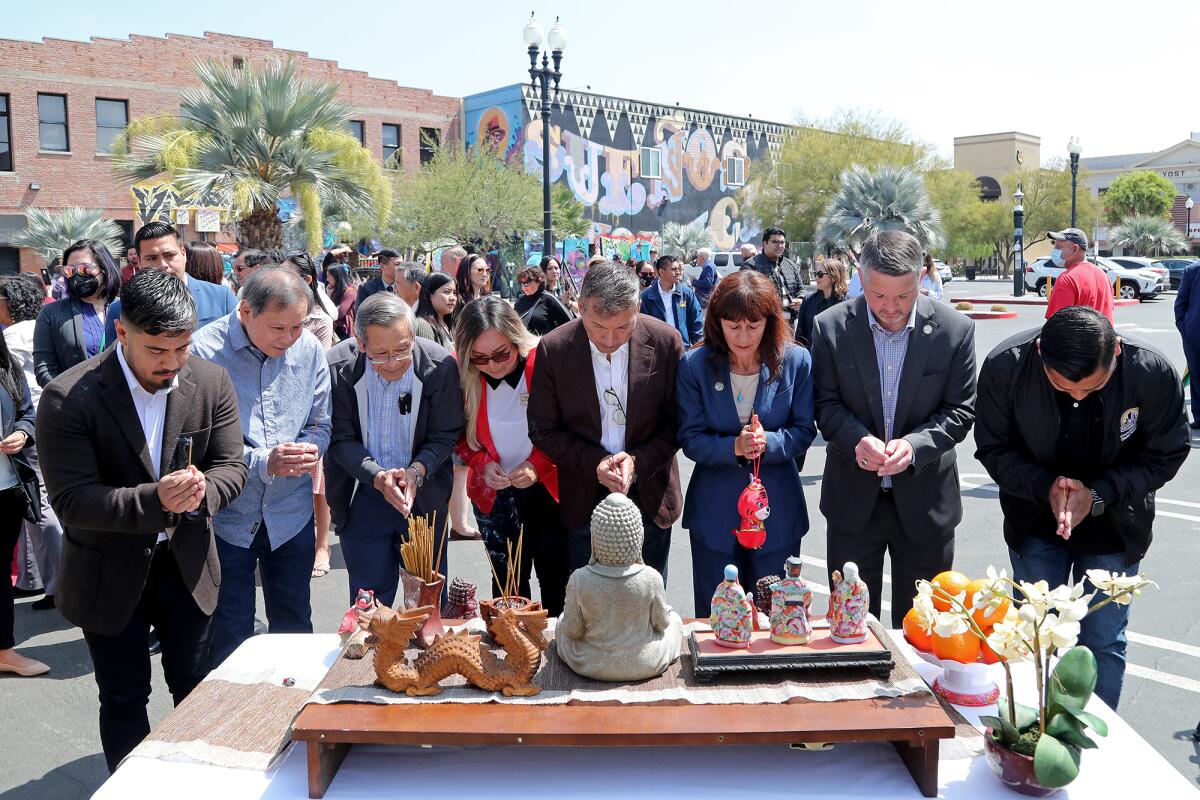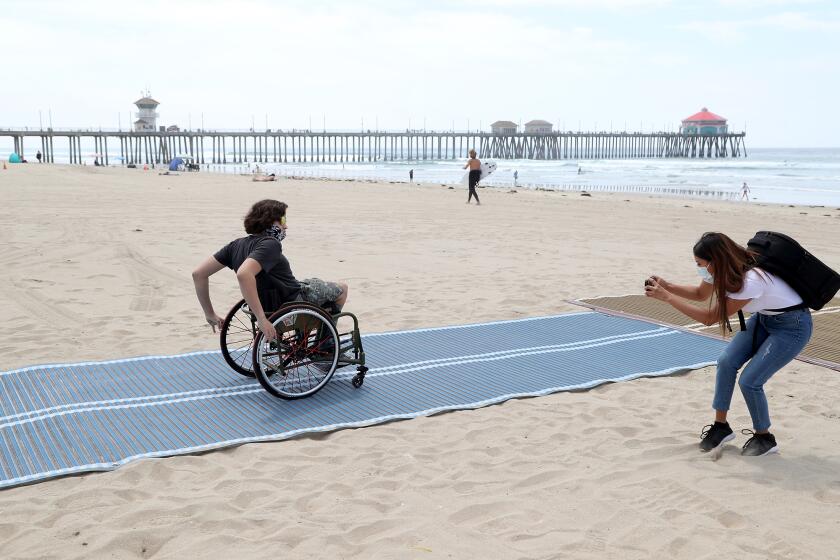Santa Ana marks apology for past Chinatown burning with a ceremonial signing

- Share via
On the drizzly night of May 25, 1906, a thousand or so curious onlookers gathered in downtown Santa Ana to witness a hateful spectacle: the torching of its Chinatown.
With an alleged leprosy case identified during a health inspection the day before, the ethnic enclave burned to the ground at the direction of the Santa Ana City Council.
More than a century later, the scene couldn’t have contrasted more.
Santa Ana’s current City Council members gathered near the site of the Chinatown fire to commemorate an act of atonement on the eve of its historical anniversary.
“We want to make sure that we use this opportunity to highlight what happened to our Chinatown here in Santa Ana but also recognize that this isn’t an isolated case,” said Mayor Vicente Sarmiento during a ceremonial signing of the city’s Chinatown apology. “This isn’t to try to unwind [or] rewrite but understand what history we have because we can’t go forward without understanding our past.”
For generations, Santa Ana City Council never apologized for the actions of its predecessor legislative board.
That changed last week when council members unanimously passed a resolution officially apologizing for the burning down of Chinatown as well as past anti-Chinese racism.
The city followed by hosting a ceremonial signing of the Chinatown apology resolution on Tuesday that invited members of the Chinese American community and began with a cultural lion dance performance.
Linn Lee, a U.S. history and social studies curriculum specialist with Santa Ana Unified School District, called the 1906 fire an act of “ethnic cleansing.” As a Chinese American resident, she welcomed the apology.
“It’s the first step in reconciliation,” Lee said. “If this moment turns into a plaque where students can visit and discuss this incident, then this is a really good point in starting to heal.”
Council members Thai Viet Phan and Johnathan Ryan Hernandez led the apology effort alongside Planning Commissioner Alan Woo.
“Across the nation, there were other Chinatowns that went through similar experiences, some more violently than what happened here in Santa Ana, but, nevertheless, it occurred,” Woo said at the ceremony. “As we go forward in the next few years, you will start seeing Chinatown rising again.”
He mentioned the possibility of murals and monuments to mark the history.

At its peak, about 200 Chinese residents called Santa Ana’s Chinatown home during the 1890s. But a steady stream of complaints about the enclave from the press, businessmen and city leaders set the stage for its fiery end.
Santa Ana established a new City Hall next to Chinatown in 1904. Two years later, Mayor George Edgar accompanied city health officer Dr. John I. Clark for an inspection of the premises. Clark found Wong Woh Ye, an elder Chinese man, and declared that he bore the “horrible sores of leprosy.”
An emergency meeting of Santa Ana City Council followed the morning after. The city’s Board of Health authored a resolution that prescribed a fire as the best way to deal with the alleged threat of disease.
After considerable debate, Councilman John Cubbon joined his council colleagues and pledged his vote to have the fire marshal oversee the torching of Chinatown.
“Purge that plague hole once and for all,” Cubbon said. “Burn the damn place down and do it tonight.”
Ye’s diagnosis would later be disputed. By then, he had already died in a quarantine tent the following month.
After the fire, only one Chinese resident remained in Santa Ana by 1910.

Dylan Almendral, a local historian, carried a copy of Stephen Gould’s “The Burning of Santa Ana’s Chinatown” to the ceremony. It’s the only known book on the subject. Almendral has researched the incident for the past five years and pushed previous councils to atone for the shameful chapter in Santa Ana’s history.
“I tried to get this done for the city’s 150th anniversary,” he said. “I don’t blame people for not wanting to confront the history, but it needs to happen. It’s a scar on our history, and it’s starting to heal.”
After the fire, it wouldn’t be until the 1940s when Chinese American residents like Fred Lau lived and worked in the city again.
Lau opened Santa Ana Food Market in 1949 following his service in World War II. Lau’s sons continue the family business today and applauded Sarmiento’s public signing of the apology.
“We were one of the first stores that catered to Latinos and Blacks,” said Walter Lau. “I lived in Santa Ana so long that I have the face of a Chinese and a heart of a Mexican.”
Santa Ana Food Market stands as an example of what could have existed much sooner if the city had embraced Chinese Americans rather than shunned them at the turn of the 20th century.
“It’s the start of a healing process of telling people the true history of Santa Ana,” Lau said, “not just for Asian Americans but other people, also.”
All the latest on Orange County from Orange County.
Get our free TimesOC newsletter.
You may occasionally receive promotional content from the Daily Pilot.






